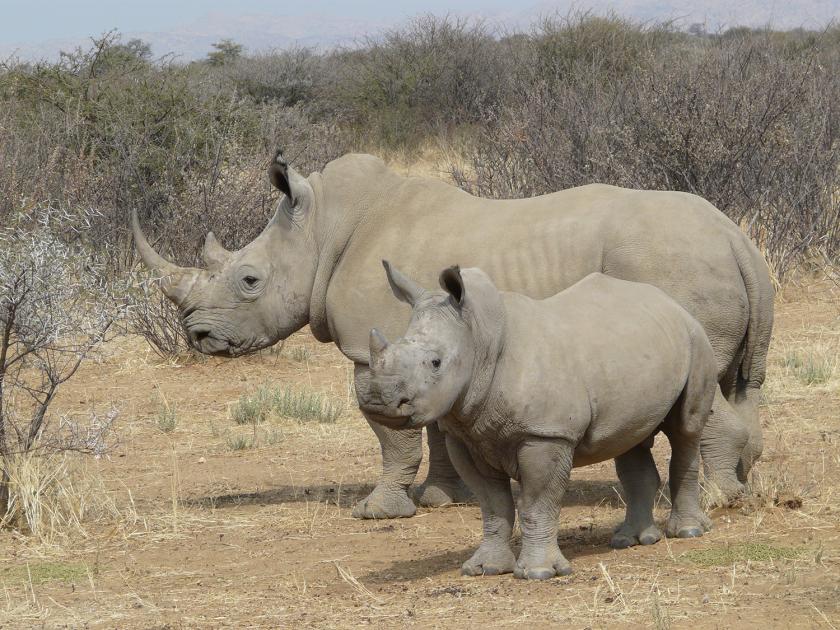CITES statement: Statement concerning a circular issued by China’s State Council on the use of rhinoceroses and tigers and their products

The CITES Secretariat has received queries from the media and the general public concerning a Circular issued by China’s State Council on Strictly Controlling the Operation and Utilization of Rhinoceros and Tigers and Their Products which was published by the Government of China on 29 October 2018.
The Secretariat informs the Parties, observers and the general public that, on 3 November 2018, following enquiries made by the Secretariat, the CITES Management Authority of China provided some clarifications about the Circular issued. In their communication, the Chinese authorities state that the policy adjustment was needed to address inconsistency between previous policy and the provisions of national law, in particular the Wild Animal Protection Law of the People’s Republic of China. According to China, the Circular would inter alia better facilitate national policy implementation in relation to matters such as medicinal research and clinical treatment, transport of specimens for scientific research and cultural exchange, subject to certain stipulated requirements being met. China further stated that with this new Circular, its national management policy is in accordance with its national law and it considers that this new policy is in line with the provisions of the Convention.
The Convention regulates international trade in specimens of CITES-listed species but, on occasion, the Conference of the Parties has adopted resolutions and decisions that touch upon domestic trade and use of such specimens where this is necessary to support the regulation of international trade. In this statement, the Secretariat summarizes the relevant rules and guidance under CITES regarding rhinoceroses and tigers.
Rhinoceroses
With a few limited exceptions, all five species of rhinoceros (white rhino, black rhino, Sumatran rhino, greater one horned rhino and Javan rhino) are included in Appendix I of the Convention and can therefore not – as a general rule – be traded internationally for commercial purposes. As such, live specimens and parts and derivatives, such as horns from rhinoceroses taken from the wild, can only be traded internationally for non-commercial purposes. International trade in specimens of live rhinoceroses bred in captivity and in their parts and derivatives are subject to different rules.
Resolution Conf. 9.14 (Rev. CoP17) on Conservation of and trade in African and Asian rhinoceroses urges all Parties to adopt and implement comprehensive legislation and enforcement controls, including internal trade restrictions and penalties aimed at reducing illegal trade in rhinoceros parts and derivatives, including any specimen that appears to be a rhinoceros part or derivative according to an accompanying document, the packaging, a mark or label or based on any other circumstances.
The Resolution further urges CITES Parties, where relevant and as a matter of priority, to work with all user groups and industries to develop and implement well targeted strategies for reducing the use and consumption of rhinoceros parts and derivatives, with the aim of achieving measurable change in consumer behaviour.
Tigers
Tigers have been included in Appendix I of CITES since 1975, which means all international trade in tigers, including parts and derivatives, for commercial purposes is generally prohibited under the Convention.
In Resolution Conf. 12.5 (Rev. CoP17) on Conservation of and trade in tigers and other Appendix-I Asian big cat species, the Conference of the Parties of CITES recommended inter alia that consumer States of tiger specimens should
- work with traditional medicine communities and industries to develop and implement strategies for gradually reducing and eventually eliminating the use of tiger parts and derivatives
- where necessary and appropriate, remove references to such parts and derivatives from the official pharmacopoeia and include acceptable substitute products that do not endanger other wild species; and
- introduce programmes to educate the industry and user groups in order to eliminate the use of substances derived from tigers and promote the adoption of appropriate alternatives.
This Resolution also urges Parties in whose territories tigers and other Asian big cat species are bred in captivity to ensure that adequate management practices and controls are in place to prevent parts and derivatives from entering illegal trade from or through such facilities.
In Decision 14.69, the Conference of the Parties urges Parties, especially Appendix-I Asian big cat range States with intensive operations breeding tigers on a commercial scale, to implement measures to restrict the captive population to a level supportive only to conserving wild tigers; tigers should not be bred for trade in their parts and derivatives.
The Secretariat is currently reviewing the information provided by China in the Circular. On the basis of it and further clarifications that may be requested from China, and in the light of the relevant rules and guidance under CITES, the Secretariat will consider if it needs to draw any matters to the attention of the Parties.
This article originally appeared at https://cites.org/eng/news/statement-concerning-a-circular-issued-by-chinas-state-council-on-the-use-of-rhinoceroses-and-tigers-and-their-products_08112018